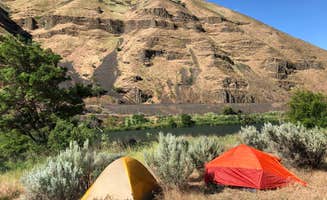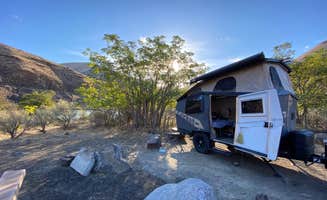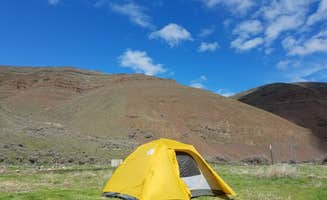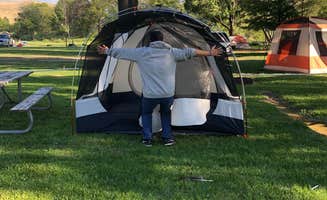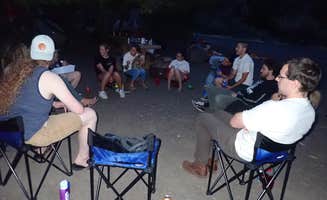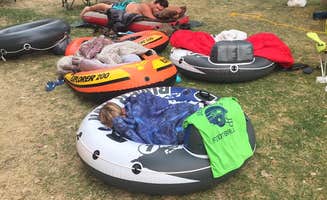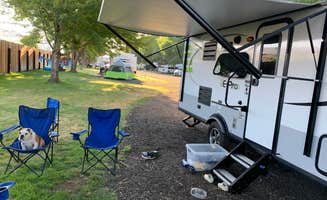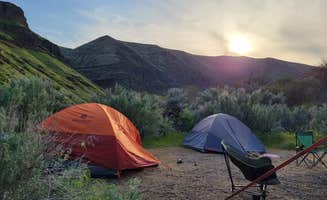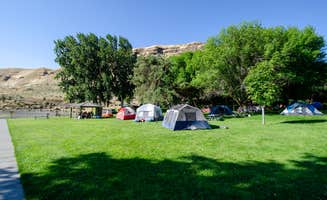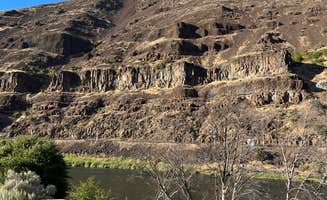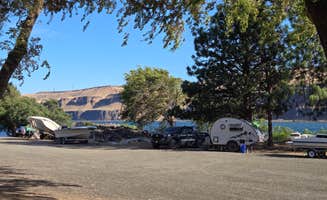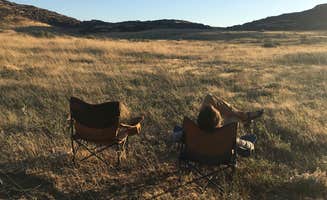Dispersed camping near Moro, Oregon provides access to both river canyons and high desert terrain at elevations ranging from 400 to 3,000 feet. Located in Sherman County, this area experiences temperature swings of up to 30°F between day and night, particularly during spring and fall seasons. Camping options span from primitive riverside locations to established RV parks with hookups, typically ranging from free to $35 per night depending on amenities.
What to do
Fishing access points: Along the Deschutes River corridor, multiple campgrounds offer direct river entry for anglers. At Macks Canyon Recreation Site, "the view of the river was amazing and we watched lots of fishing boats and rafting boats go by," according to one visitor who particularly enjoyed site 11 for its river views.
Hiking on old railway lines: Trail opportunities exist beyond the standard river paths. Near Macks Canyon, "from the end of the Lower Deschutes Access Road just above the campground, you can hike along the old railway line. Again, amazing views of the Deschutes and the canyon. We did about 5 miles road trip but you could go further."
Water recreation: Swimming areas with designated zones make river enjoyment safer. At Lepage Park Campground, campers appreciate "a really large beach and roped off swimming area, as well as a boat ramp, dock for fishing, and trails for hiking."
Stargazing opportunities: The limited light pollution creates exceptional night sky viewing. Sherman County's open fields provide unobstructed views, with one camper at Sherman County RV Park noting the "beautiful night sky" as a standout feature of their stay.
What campers like
Off-grid experience with basic amenities: Many campgrounds balance remoteness with essential facilities. At Beavertail Campground, visitors appreciate that it's "worth the drive down the never ending gravel road. A quiet little oasis on the lower Deschutes surrounded by beautiful rock. 15 or so campsites and was surprised by how big the sites were. Large picnic tables, clean bathrooms and water pump."
Wildlife viewing: The region hosts diverse desert species observable from campsites. Near Cottonwood Canyon State Park, "the stargazing is really nice and we saw some interesting birds and lizards around the campsite."
Train watching: Rather than viewing passing trains as a nuisance, some campers incorporate them into their experience. At Beavertail Campground, visitors "loved the cargo trains going by at night on the other side of the river and the sunset/sunrise through a gap in the mountains."
Unique geology: The basalt canyon formations create distinctive landscapes. At Giles French Park, "the views are spectacular, especially at sunset. GFP sits in a canyon with sheer basalt cliffs on either side. The play of sunlight on the Oregon side at sunset is colorful."
What you should know
Seasonal wind conditions: High winds frequently impact camping comfort, especially in canyon areas. At Macks Canyon Recreation Site, one camper noted, "The only negative is that it can get super windy. At one point we were frantically trying to get our awning down from the Cricket and things were flying everywhere."
Road quality considerations: Access to remote campsites often requires navigating rough roads. For Macks Canyon, "I have never experienced a washboard road as bad as this was for 6-7 miles. I thought the doors were going to blow off the truck. Not an exaggeration."
Limited water and supplies: Preparation is essential as services are minimal. For Sherman County RV Park, a visitor advised that "there aren't many supply options in town, so if you need major groceries, go to The Dalles, propane go to Wasco, gas go to Biggs or the Dalles."
Wildlife precautions: Awareness of local fauna is important for safety. At Cottonwood Canyon, campers are reminded "this means no electric sites, no running water, no flush toilets. Its also a rattlesnake habitat in Eastern Oregon's high desert biome."
Tips for camping with families
Swimming areas with supervision: Family-friendly water access provides safer recreation options. Peach Beach RV Park is "next door to a park where you could swim, launch a boat or fish. Tucked away just across the river and close to towns if you need anything."
Playground facilities: Some campgrounds offer built-in entertainment for children. LePage Park features "a huge grassy area for tents" and "a really large beach and roped off swimming area, as well as a boat ramp, dock for fishing, and trails for hiking" plus "a swimming hole."
Educational opportunities: The area's historical and natural features provide learning experiences. At Maryhill State Park, "there is a great winery nearby for the adults and a museum and the Stonehenge construction for the little ones."
Protected camping areas: Finding wind-sheltered sites improves family comfort. When staying at Cottonwood Canyon, consider that "the campground itself is very open with really no privacy between sites but that is to be expected in this sort of landscape" and prepare accordingly.
Tips from RVers
Full hookup options: Several locations provide complete services for extended stays. At Sherman County RV Park, RVers find "clean, well tended, quiet and beautiful" facilities with "the sites are level with full amenities - pull-throughs and easy back-ins."
Dump station locations: Knowing waste disposal options helps with trip planning. While staying at Deschutes River State Recreation Area, note that "most A loop campers were in RVs, and the bathrooms weren't crowded. The bathrooms were clean as were the shower stalls."
RV size limitations: Understanding site dimensions prevents arrival disappointment. At Peach Beach RV Park, "sites are on the smaller size but our 43 ft 5th wheel fit just fine."
Wind protection strategies: Positioning RVs strategically helps manage high winds. When camping in exposed areas like Macks Canyon, prepare for sudden wind gusts by securing awnings and loose items, particularly during evening hours when "the wind kicks up (strong) around 7:30p to 8:30p."


